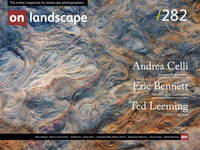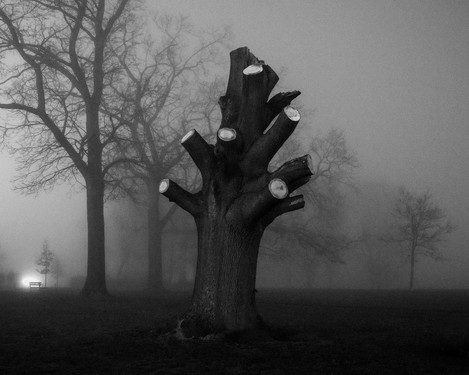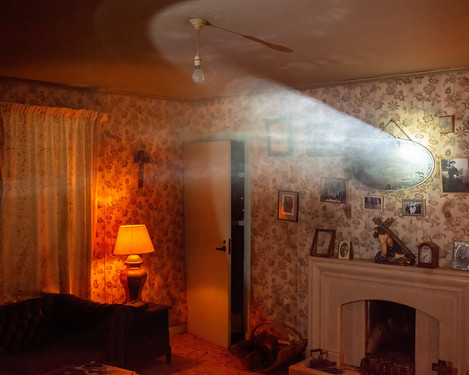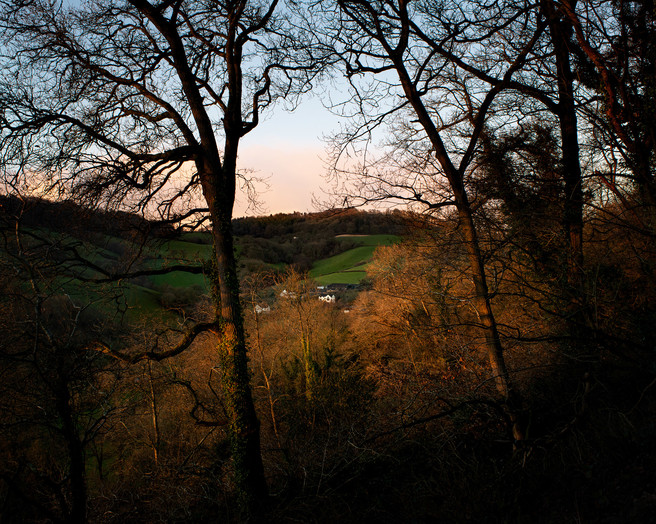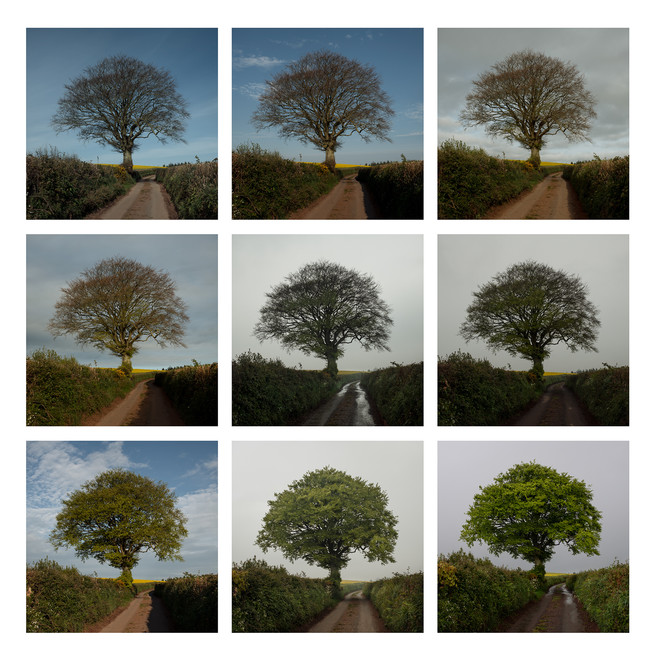Interview with Robert Darch

Robert Darch
Robert Darch is a British artist-photographer based in the South West of England. He has published and exhibited widely and his photographs reside in public and private collections.
His practice is motivated by the experience of place, in which the physical geography and material cultures of places merge with impressions from contemporary culture that equally influence perception. From these varied sources, both real and imagined, he constructs narratives that help contextualise a personal response to place.

Alexandra Wesche
I am an amateur photographer from Germany who is into landscapes and stories. I like to discover both on my daily walks through the woods with my sighthounds and on occasional vacations.
My first thought after unpacking 'The Island' was: Wow, it's beautiful! And I still think that, whenever I take the book off the shelf. The full size cover image shows a lone figure standing on the flooded causeway of a small island. The picture seems symbolic, which is a first indication of what's to come on the inside.
The image is printed with a silvery sheen on a very tactile cardboard paper. Despite the delicate look, the materials don't feel fragile. Opening the cover reveals an open binding book block with the title and author in a large silver serif font, as well as a handwritten signature on midnight blue paper. The paper choices and design are very classy and elegant, and despite the excellent quality of the printing and bookmaking, it can be purchased for a very fair £27.
The cover flap hides the introductory writing by Robert Darch. You can read this now or leave it for later. I prefer the latter. On the next page you see the silver thread used for the binding as well as a single date: 23.06.2016. The day the majority of Britain opted to leave the EU in the Brexit referendum. This date gives the background theme for this series of images.
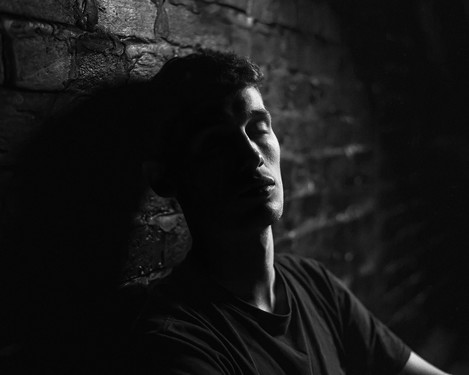 What follows is like a visual elegy to the political climate and future situation of Britain as felt by the photographer, and by the young people he portrayed in dark monochrome tones along with somber landscape scenes. Both types of pictures are full of poetry and mood and increase their mutual impact on the viewer.
What follows is like a visual elegy to the political climate and future situation of Britain as felt by the photographer, and by the young people he portrayed in dark monochrome tones along with somber landscape scenes. Both types of pictures are full of poetry and mood and increase their mutual impact on the viewer.
The places are not recognisable, they could be anywhere in the rural areas of Britain. The faces have no names, they represent a whole generation whose outlook has changed for the worst and who, mostly, did not agree with the result of the referendum in the first place. There's a story between these pages, and it's a story of loss, anxiety, vulnerability, loneliness, and longing, but also strength and hope.
Many of the photographs have metaphoric potential. The last image in the book shows a tree, which might be an oak, an English symbol of strength, but with its limbs chopped off. Others are not quite as obvious, but always evocative, like the fallen bird breeding box and the shovel lying in an unidentified liquid.
As mentioned, I read the text afterwards, because I first like to develop my own thoughts and feelings on a series of images. In this case, it wouldn't have mattered, because Robert's introduction is not an artist statement on the book. Instead, he tells the fragmented story of a young person growing up in a rural town, which complements the photographs wonderfully. A story of 'Smalltown Boys' (and girls), 'Suburban Buddhas' and the 'Beautiful Ones' waiting for their 'Runaway Train', or expressed with the lyrics that Robert picked:
Everybody's moving, moving, moving, moving. Please don't leave me to remain~Fugazi
The book speaks to me strongly. I do not live in Britain myself, but I can relate to the theme easily, because I grew up in a small town in East Germany shortly after the Wall came down. There was a very similar atmosphere of anxiety and uncertainty and always hope… 'Auferstanden aus Ruinen' indeed.
Interview
AW: Where and what is The Island?
RD: The Island, like a lot of my work, is a construction, it’s England and the Brexit vote but a response distilled through my experience, thoughts and feelings.
The work was predominately made in the South West of England where I am based and the Midlands where I grew up. Amongst those primary images, I have also used several images I had previously taken that I felt added something to the narrative. For example, the image of the spade and black liquid was taken in an abandoned cement factory in Germany.
AW: Despite the melancholy and anxiety of the series, there are also traces of hope. Has your outlook changed since the beginning of this series?
RD: Not really, in fact, since I completed the series in 2019, I think life has become much more uncertain, with Covid, the cost of living and the war in Ukraine. I am filled with much less hope, but it’s interesting that you find some hope in the work. That’s not to say I’m a negative pessimist, in general, I’m a realist and not really that melancholic!
AW: You released two books before this one, can you say something about them? What were they about? How did you publish them?
RD: I published my series, The Moor, in 2018 with Another Place Press and my series Vale, I self-published under my imprint LIDO in 2020. The Moor is set on Dartmoor and imagines a dystopian future where people are just about existing, and Vale imagines a romanticised summer, with uncanny undertones, which was in part an exploration of a part of my life lost to illness.
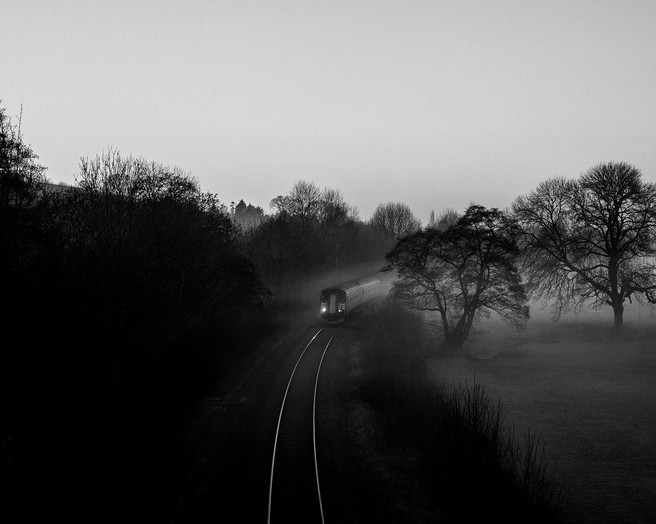
AW: Has there been a natural progression or evolvement between these books in the way that one informed the next one, or are they completely separate?
RD: In theory, the books are completely separate, even though some of the themes are shared between the series. Although I do think of the three series as a very loose trilogy, in that the titles, the Moor, Vale and The Island, had some commonality in being about specific geographical places and that all three series predominately contain pictures/portraits of young people. Moving forward, I’m not sure that I will work in a similar way again, for example, my ongoing series Durlescombe features almost exclusively documentary images but framed in a fictional context of an imaginary place.
AW: Your books have a strong cinematographic atmosphere and narrative, how detailed are the stories in your head?
RD: The atmosphere or sense of place is always very clear in my head, in fact, this is where the work exists for a long time as I am taking pictures. It’s usually an interest in a specific place which helps define the work, and then as I start taking pictures, the narrative tends to develop. For example, I didn’t set out to make a fictional dystopian series for The Moor, I had been making landscape pictures and then started photographing people that had a connection to the place, and the idea evolved from there.
AW: With the experience of these three books, what are your thoughts on the photo book as a medium?
RD: That’s a big question! Obviously, I love photo books, and I always made work with the book as the ideal mode of presentation for my work. This goes right back to when I was doing my degree in Newport in the early 2000s. However, I think the photo book market and scene has developed vastly since then in terms of people making books, publishers and the audience. It’s the ideal medium for my work as the sequencing and narrative are integral to the understanding of the work, and the book allows me to fully present my vision.
AW: Has your general experience of making books been a good one?
RD: In general, yes, I feel very privileged that people are buying my books, at the time of writing, I only have around 250 copies of The Island left, and it has travelled all over the world. The money I make from the book allows me to spend time working on new projects. It’s important to me that I make some money from my work to justify the time I spend creating it. However, it’s a lot of work, especially if you’re self-publishing, you are also the distributor and responsible for marketing the book, and the list goes on. Thankfully this time, I had Tom Booth-Woodger, who designed the Island and also oversaw the production of the book, which was a great help.
AW: How did photography become important for you?
RD: It allowed me to make sense of my place in the world, that I could see what was around me, share and experience it, but somehow also be separate from it.
AW: What are your sources of inspiration?
RD: My inspiration comes from my life experience, thoughts, feelings and observations, as well as influences from culture, art, painting, cinema, photography, etc.
AW: You studied photography/art at university. Has that helped you find your way as a photographer, and if so, can you describe how?
RD: Yes, I did a BA in 2000 and returned to education to study for a Masters's degree in 2013. Studying gives you structure, feedback and support. And more specifically, when I was studying for my BA, it really introduced me to a lot of photographers, photo books and ways to conceive work. In 2000 it was the early days of the internet, pre-social media and the ease with which we can share information now. So, I learnt everything from the lectures, the library, my teachers and my peers. If you pick the course well, you can make wider connections which I have benefited from in recent years.
AW: Some of your colour landscape photographs (e.g. your Way to Blue series) have a colour palette, composition and mood that remind me of classic landscape painters like Claude Lorrain. Is that deliberate?
RD: Not really, I am not actively trying to replicate painting, although often people reference classic English painters in relation to my work. I think it has a lot to do with how they faithfully captured the landscape and the natural colour palette. I suppose we are framing the landscape in a similar way, making sense of all the elements within the frame. I would imagine paying attention to the light has something to do with the mood. For way to Blue, I photographed at Dawn or just before dusk.
AW: A noticeably recurring motive in several of your series are trees and woods. What do they mean to you?
RD: I love being in the woodland, amongst the trees, it’s where I feel most relaxed. It’s where I want to spend my time.
AW: How important is gear for you, and does it influence your way of working?
RD: Not so important, although it does dictate how you work. I use a Nikon D850 - shooting on the 5 by 4 crop mode. My black-and-white work is just set to Monochrome in the camera. I treat the camera much like I did my old Mamiya 7. Only using fixed prime lenses. The benefit of digital is the number of images I take is not limited. This is both a blessing and a curse. However, I would say the fact I learnt on film has greatly benefited my understanding of light and what I want to get from an image.
AW: What are you working on at the moment, and what are your plans for the future?
RD: I am hoping to properly finish my series Durlescombe, which I have been pottering away at for 7 years now. I realise I need to get an overview of what I have done so far and work out what is missing.
The Island
Robert’s book ‘The Island’ can be purchased through his website: www.robertdarch.com
He can also be found on Instagram, Twitter and Facebook.

